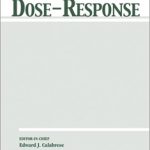Menachem Oberbaum
Highland amphibians and high potencies: a 20-year metamorphosis
Homeopathy, 2013, 102 (1), 1-2

In the late 1980s, the Austrian biologists Christian Endler and Waltraud Scherer–Pongratz, based at the time at the Zoological Institute of Graz University and the Boltzmann Institute Graz, picked up a long-forgotten line of research on amphibian metamorphosis and homeopathic potencies.1 Rather than merely replicate König's original experiments conducted in the 1920s, using metal salts they chose to study amphibians' response to that most amphibian-specific hormone thyroxine.2 This was a bold innovation in the field of fundamental homeopathic research.Their experimental approach was isopathic: metamorphosing frog larvae, especially those from highland biotopes, such as were mostly used, are exquisitely sensitive to thyroxine. Their physiologically elevated thyroxine level puts them in a state referred to as thyroxine stress. The idea was that this might make them particularly responsive to thyroxine potencies. And the bet came off. First results were published in 1991, with thyroxine 30× clearly slowing down activity and metamorphosis speed in animals from highland biotopes of Rana temporaria, the common European frog.2 and 3Since then, working in their own or others' laboratories, the team have varied the core parameters in different versions of the original experiment, some with promising, others with unfruitful or contradictory outcomes.4







